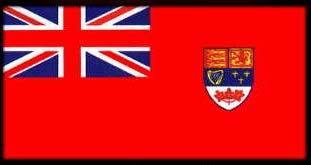

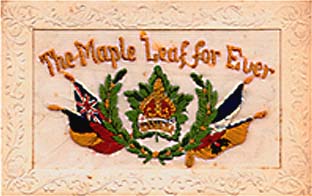
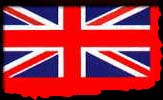 The Union
Jack in the flag demonstrates that our legal system and our political
system
of representative, parliamentary democracy originate in Britain. Also,
English is the dominant language in Canada. Canada is predominantly a
Christian
country. Our compassionate social legislation owes its origins to
Christianity.
Integrity and compassion and concern for the family -- virtues which
infuse
public and private morality in Canada -- reflect the importance of
underlying
Christian morality in Canada. That is symbolized by the cross within the
Union Jack.
The Union
Jack in the flag demonstrates that our legal system and our political
system
of representative, parliamentary democracy originate in Britain. Also,
English is the dominant language in Canada. Canada is predominantly a
Christian
country. Our compassionate social legislation owes its origins to
Christianity.
Integrity and compassion and concern for the family -- virtues which
infuse
public and private morality in Canada -- reflect the importance of
underlying
Christian morality in Canada. That is symbolized by the cross within the
Union Jack. 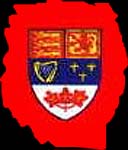 The
crest contains three maples leaves with stems joined. The three leaves
represent the component peoples of Canada: the natives, the French and
English original settlers, and the others, mostly European, who came
later.
The veins of the leaves are gold, symbolizing wealth -- wealth created
through unity and passion for this land and hard work. The Maple Leaf,
of course, also represents the forests of Canada -- a most important
contributor
to the nation's wealth. These maple leaves also match the anthem The
Maple Leaf Forever, whose stirring words make it the anthem of the
real Canada.
The
crest contains three maples leaves with stems joined. The three leaves
represent the component peoples of Canada: the natives, the French and
English original settlers, and the others, mostly European, who came
later.
The veins of the leaves are gold, symbolizing wealth -- wealth created
through unity and passion for this land and hard work. The Maple Leaf,
of course, also represents the forests of Canada -- a most important
contributor
to the nation's wealth. These maple leaves also match the anthem The
Maple Leaf Forever, whose stirring words make it the anthem of the
real Canada.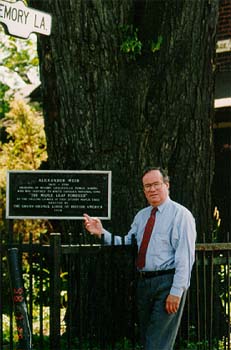
|
|
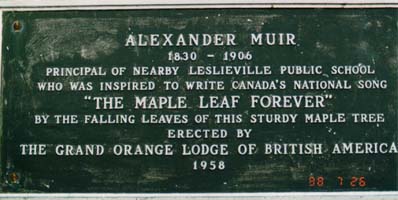
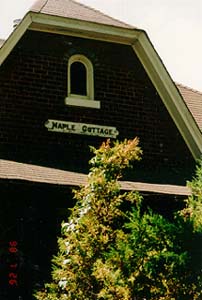 .........
.........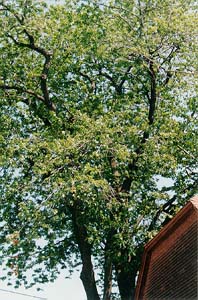
.......................Alexander Muir's house | The Tree which inspired the Maple Leaf Forever
|
|
 And
planted firm Britannia's flag
And
planted firm Britannia's flag